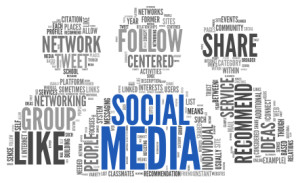by gabriel_sales | Jun 14, 2013
 This is Part 3 of a 4-part blog series discussing the need for expert solutions for B2B sales and marketing in 2013. For Part 1, please click here and for Part 2, please click here.
This is Part 3 of a 4-part blog series discussing the need for expert solutions for B2B sales and marketing in 2013. For Part 1, please click here and for Part 2, please click here.
In the first two parts of this blog series, we explained how technological innovations have dramatically changed the way we communicate with one another as well as how we buy and sell things.
To briefly review, we explained that the internet and internet-based technologies have changed communication from a transmission model to a participation model. For B2B sales in 2013, this means that you can no longer simply ‘transmit’ sales material or sell hard upfront. This is because your buyer wants to ‘participate’ in the sales process every step of the way.
By creating digital marketing content and running content marketing campaigns using a marketing automation platform, you can simultaneously give your prospects something to participate in and monitor their buying behaviors.
Using the information you gather from your marketing automation solution, you can intuitively guess how each prospect would like to participate with your brand as they move down the sales/buying cycle. For example, if they have been reading all of your educational blog posts, they might also enjoy downloading a white paper. If they have been clicking on “pricing” or “comparison” type pages, they might be ready for a phone call.
Understanding how the new participatory communication model works, and integrating this information with B2B selling and buying cycles is not a simple task. It requires sales expertise, technological capabilities, the ability to produce a mountain of marketing content, a little bit of storytelling and some social intuition.
In light of this, many companies have realized they do not have the internal capacity to revamp their sales and marketing to fit the new communication model and buying cycle. Instead, they have turned to the experts.
In the last part of this blog series, we explain why trusting the experts makes sense for B2B sales and marketing outsourcing in 2013. Click here for Part 4.
If you have any questions, please feel free to contact us.
by gabriel_sales | Jun 5, 2013
 This is Part 2 of a 4-part blog series discussing the need for expert solutions for B2B sales and marketing in 2013. For Part 1, please click here.
This is Part 2 of a 4-part blog series discussing the need for expert solutions for B2B sales and marketing in 2013. For Part 1, please click here.
In the last blog, we explained that for B2B sales in 2013, buyers have control of the buying process and want to ‘particpate’ in every step of the sales cycle.
What all of this translates to for the B2B sales world is that your stellar salesmen are no longer enough to consistently close deals. When the buyer feels like he is in control; he is not about to let some smooth-talking stranger tell him what to do. He may end up making the same buying decision your salesman wants him to, but he wants to feel that he has been an active participant in reaching that decision.
So, how do you appease the buyer and let him revel in his newfound sense of buying power? You build a sales engine with digital content marketing and let the buyer interact with you digitally until he/she is ready to be sold to directly.
Because the new communication model is about participation rather than transmission, you need to build digital content that buyers can engage or “participate” in. Give prospects the value proposition they need to make an informed decision, but don’t be overtly sales-y about it. Give them educational blogs to read, quick videos to watch or invite them to attend live webinars.
By having participatory experiences with your brand, prospects will start to feel comfortable enough with you to actually want to be sold to. If you use a marketing automation platform along with a strategic content marketing campaign, the buyer’s digital behaviors will let you will know when to start selling.
For Part 3 of this blog series, please click here.
If you have any questions or would like to speak to a B2B sales and marketing outsourcing representative, please feel free to contact us.
by gabriel_sales | Jun 1, 2013
 The changing world of B2b sales
The changing world of B2b sales
In B2b sales in 2013, many companies are starting to catch on to the fact that sales and marketing have changed. Dramatically. This is mostly due to technological innovations that have severely altered the way we receive and interact with information.
In this four-part blog series, we explain how the ways we buy and sell things have changed and why it is no longer easy or effective to sell without the help of experts.
Throughout human history, we have seen time and time again that technological innovation changes the way we live. Inventions like electricity and the telephone played such a role in shaping the world we live in today that we could hardly imagine our lives without them.
So, why should we expect that the internet and internet-based technologies wouldn’t have the same revolutionizing effect on the economy, business and culture?
One of the more interesting changes resulting from the internet revolution is the way people buy and sell things. Before the internet, the mediums we used to get information about the products and services available to us worked on a transmission model, where a message goes from an active sender to a passive recipient. In this model the buyer has little control over the process; he or she basically sits there and waits to get sold to.
The new communication model is less about transmission and more about participation. The internet has allowed everyone to have a voice and created a two-way dialogue. This means that in terms of selling, the power is now in the hands of the buyer. The buyer can now choose what type of sales content to view, what type of medium or device to view it on and when to view it. And now that buyers have all of this power, you can be sure that they will use it.
The next part of this blog series discusses what these changes mean for the world of B2B sales and marketing. For Part 2, please click here.
If you have any questions or would like to speak to a B2B sales and marketing outsourcing representative, please feel free to contact us.
by gabriel_sales | May 16, 2013
 When you think about your personal internet use, it is likely you spend a significant portion of your time watching videos of some kind. People using the internet today are accustomed to being able to consume information through video format, which can be seen by the fact that YouTube now has roughly 4 billion views per day. If your B2B company can present its sales and marketing messages through this platform, you will be ahead of your competitors.
When you think about your personal internet use, it is likely you spend a significant portion of your time watching videos of some kind. People using the internet today are accustomed to being able to consume information through video format, which can be seen by the fact that YouTube now has roughly 4 billion views per day. If your B2B company can present its sales and marketing messages through this platform, you will be ahead of your competitors.
You should start by setting up and YouTube channel for your company, which you can think of as your own television station. Through this station, you can present educational videos on industry trends, demonstrations of how your product or service solves business problems, testimonials from your past clients, short ads about promotional offers, etc.
The key to using video as a marketing strategy is to not to push the sale too hard. Just like on television, deliberately pushy ads can annoy. What you should focus on instead is providing something of value to your viewers. If you can give them something entertaining, or better yet useful, your video will be much more likely to deliver the sales results you desire. Using videos in your B2B digital marketing strategy can help you achieve your sales goals by improving retention (because you can show customers how to use your product/service) and fueling the decision-making process during the customer acquisition phase of the sales cycle.
Because producing and posting online videos is generally cost-effective, this is one area of digital marketing where you stand to gain a lot from a little effort. In the B2B sales world where time equals money, it really does not get much better than that.
For more information on using video marketing for B2B sales, please reach out to us at Gabriel Sales. You can find our contact information here.
by gabriel_sales | May 10, 2013
 It’s 2013, and it is safe to say that if your B2B company is not using social media as a marketing tool, you are behind. This is because many B2B companies (including your competitors) have realized the tremendous value in leveraging social media sites into their overall sales strategy. If for some reason your business has yet to join the social media world, this blog is meant to help introduce you to B2B social media marketing.
It’s 2013, and it is safe to say that if your B2B company is not using social media as a marketing tool, you are behind. This is because many B2B companies (including your competitors) have realized the tremendous value in leveraging social media sites into their overall sales strategy. If for some reason your business has yet to join the social media world, this blog is meant to help introduce you to B2B social media marketing.
In general, social media are websites and applications that allow users to create profiles, publish information and connect with friends and businesses. The users of these sites connect by ‘adding’ or ‘following’ one another. By adding or following someone or some company, you in effect ‘subscribe’ to all of the content they publish. The type of content published varies across the different social media platforms.
The largest and most predominant social media site today is Facebook. Facebook currently has 1.06 billion users and is mainly used by individuals to carry out digital, interpersonal relationships. However, businesses of all kinds have started to use Facebook as a way to help market their company, build their brand and connect with their customers in the digital space. Many B2B companies have recently discovered that most of their current customers and potential prospects are already on Facebook and have started to create Facebook-based marketing strategies to expand their reach. Using Facebook, B2B marketers can now push updates on new products, promotions or other activities to a large number of interested people, with a single click.
Twitter is another social media site B2B companies are using to build brand awareness and expand their reach. Twitter is similar to Facebook in that people ‘subscribe’ to your content by following you. Twitter differs in that the content published by users is in the structured form of a ‘tweet’. A tweet is a short message (140 characters max.) that can include short ideas, quotes, links to other pages, etc. In the B2B world, tweets are a great place to post industry trends, a problem you helped solve for one of your clients or even some simple ad copy. The one thing to remember with Twitter is your tweets should always stay on topic to things your followers are interested in.
The social media site most conducive to making B2B connections is LinkedIn. LinkedIn was designed explicitly for business professionals, meaning B2B people are already using it. This is now a place where B2B companies are making new connections with buyers and increasing their contacts.
Google+ is also becoming a major player in the social media world for B2B sales and marketing. With now two times the number of users as LinkedIn (400 million), Google+ may prove to be a major competitor to Facebook in the future. The value of this for B2B companies is that Google+ is more conducive to marketing than any of the other sites in that activity on Google+ is automated into its search engine.
If your B2B company has yet to take any action towards social media marketing, setting up profiles, finding followers and posting may seem like a daunting task. However, it helps to look at these social media sites as communities that you wish to join. Just like physical communities, once you start participating in digital communities, people starting interacting with you and relationships start to form. On the other hand, if your company simply puts up a profile and then does nothing with it, social media sites aren’t likely to produce marketing results. You need to remain constantly active on these sites, not just publishing your own content, but also interacting with the content posted by others. Used properly, these sites can easily translate into B2B lead generation and increased revenue.
For more information on leveraging social media as a marketing strategy for B2B sales, please reach out to us at Gabriel Sales. You can find our contact information here.
 This is Part 3 of a 4-part blog series discussing the need for expert solutions for B2B sales and marketing in 2013. For Part 1, please click here and for Part 2, please click here.
This is Part 3 of a 4-part blog series discussing the need for expert solutions for B2B sales and marketing in 2013. For Part 1, please click here and for Part 2, please click here.
 The changing world of B2b sales
The changing world of B2b sales It’s 2013, and it is safe to say that if your B2B company is not using social media as a marketing tool, you are behind. This is because many B2B companies (including your competitors) have realized the tremendous value in leveraging social media sites into their overall sales strategy. If for some reason your business has yet to join the social media world, this blog is meant to help introduce you to B2B social media marketing.
It’s 2013, and it is safe to say that if your B2B company is not using social media as a marketing tool, you are behind. This is because many B2B companies (including your competitors) have realized the tremendous value in leveraging social media sites into their overall sales strategy. If for some reason your business has yet to join the social media world, this blog is meant to help introduce you to B2B social media marketing.